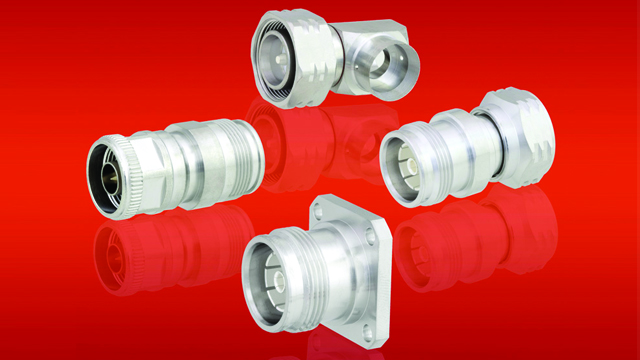Edmond likes to share design blog posts on social media and in online forums. He has a degree in Graphic Design, and he loves working with Adobe Photoshop and Illustrator. In his spare time, Zachary enjoys hiking and camping with his friends.

The 4.3-10 connector is a relatively new RF coaxial connector rapidly gaining popularity in various industries due to its compact size, low PIM performance, and high power handling capabilities. In this article, we will explore the role of the 4.3 10 connector in the IoT revolution and how it is helping to drive innovation in various fields.
The Importance of Connectors in IoT Devices
IoT devices are designed to collect and transmit data from the physical to the digital world, which can be analyzed and used to derive insights and drive decisions. These devices rely on various sensors, processors, and communication modules to capture and transmit data, and the connectors play a critical role in ensuring the reliability and performance of these components.
Connectors serve as the interface between the device and the outside world, enabling the transmission of signals and power between different components. The choice of connector is, therefore, crucial in determining the device’s overall performance, especially in signal quality, data rate, and power consumption.
The 4.3-10 Connector: Small Size, Big Impact
The 4.3-10 connector addresses SMA and N connectors’ shortcomings. Many IoT applications use the 4.3-10 connector due to its small size, low PIM performance, and high power handling.
Wearables, sensors, and IoT gateways can use the 4.3-10 connector because of its compact size. The device’s small size reduces its weight and cost, making mass production and deployment more appealing.
The 4.3-10 connector’s low PIM performance helps IoT networks communicate reliably. Passive intermodulation (PIM) occurs in RF systems when two or more signals interact, causing interference and distortion.
Because of its high power handling, long-range wireless sensors and gateways use the 4.3-10 connector. Unlike most connectors, it can handle 300 watts.
Applications of the 4.3-10 Connector in IoT
The 4.3-10 connector is used in many IoT applications, from wearables and smart sensors to industrial automation and smart cities. Some of the key applications of the 4.3-10 connector in IoT include:
Smart sensors:
The 4.3-10 connector is used in various smart sensors, such as temperature, humidity, and pressure sensors, where it enables high-precision measurement and transmission of data in harsh and noisy environments.
IoT gateways:
The 4.3-10 connector is used in IoT gateways and edge devices, enabling high-speed communication between devices and cloud-based applications. The high power handling capabilities of the connector also make it suitable for long-range communication in outdoor environments.
Industrial automation:
The 4.3-10 connector is used in various industrial automation applications, such as process control, factory automation, and robotics. Its low PIM performance and high power handling capabilities are critical for ensuring reliable and efficient communication.
Smart cities:
The 4.3-10 connector is being used in various smart city applications, such as smart lighting, traffic control, and public safety, enabling real-time monitoring and control of various systems and devices.
Future Developments in 4.3-10 Connector Technology
The 4.3-10 connector is new and improving. Future 4.3-10 connector technology improvements may include:
- Higher performance: The 4.3-10 connector’s high performance can be improved. PIM performance may decrease, power handling may increase, and frequency ranges may expand.
- Integration with other technologies: The 4.3-10 connector may be integrated with 5G, Wi-Fi, and Bluetooth for more advanced IoT applications.
- Standardization: As the 4.3-10 connector becomes more popular, more standardization efforts will make IoT device and network design and deployment easier.
Conclusion
The 4.3-10 connector is critical in the IoT revolution, enabling reliable and efficient data transmission in various applications. Its advantages make it an ideal choice for many IoT devices and systems. As the IoT continues to evolve and expand, we expect to see even more advanced and innovative uses of the 4.3-10 connector, driving further innovation and growth in this exciting field.
